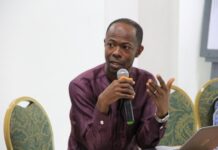
By Degraft OSEI
Social media, with its promise of global connectivity, should be the great equalizer. But for creators in underserved regions, it often feels like a party they’re invited to but cannot fully participate in.
For all its reach, the digital economy has yet to overcome the stark realities of the digital divide. Creators in places like Sub-Saharan Africa, for example, often face systemic barriers that prevent them from thriving, despite their undeniable talent and creativity.
This divide isn’t just technological—it’s deeply economic and structural. The internet, while seemingly everywhere, remains a luxury for many. Data costs in Africa are among the highest in the world, and internet penetration, though improving, lags behind global averages. Combine this with algorithms that prioritize content from established markets, and you have a recipe for exclusion.
The Tale of Two Creators
Take the story of two creators: one in Accra and another in London. Both are equally talented and produce visually stunning content. Yet, the London-based creator has access to faster internet, affordable data, and an ecosystem of brands eager to collaborate.
The creator in Accra, meanwhile, struggles with intermittent connectivity, high upload costs, and limited monetization opportunities. The result? One creator thrives, while the other struggles to make ends meet.
The Cost of Connectivity
Data costs in Africa can be as much as ten times higher, relative to income, than in Europe or North America.
For a creator uploading high-definition videos or live-streaming events, these costs can quickly become prohibitive. While initiatives like Google’s Equiano subsea cable aim to address this disparity, much work remains to be done.
The Algorithmic Barrier
Even when creators overcome connectivity issues, they face another hurdle: algorithms. Platforms like YouTube, TikTok, and Instagram often prioritize content that appeals to high-value advertising markets.
This means that a tech reviewer in Nairobi might create insightful, engaging videos but struggle to gain visibility compared to a similar creator in Los Angeles.
Examples of Progress
Some platforms are stepping up to bridge this gap. Luupli, for instance, has implemented features designed to level the playing field.
By prioritizing local relevance and content ownership, Luupli ensures creators from underserved regions are not just visible but valued.
For example, a Ghanaian photographer can use Luupli’s licensing tools to retain ownership of their work and earn royalties when their images are reused.
This approach isn’t just fair—it’s smart. Platforms that invest in creators from emerging markets stand to gain as these regions become major economic hubs. Africa’s population is set to double by 2050, and its young, tech-savvy population represents a vast, untapped market.
A Path Forward
Bridging the digital divide requires a multi-faceted approach:
- Affordable Internet Access Governments and private companies must invest in infrastructure to reduce data costs. This could include expanding broadband networks, subsidizing connectivity for creators, and encouraging competition among service providers.
- Algorithmic Fairness Platforms should redesign their algorithms to prioritize diversity and inclusivity. Content that resonates locally should have the same chance of global visibility as trending content from established markets.
- Monetization Tools Creators need access to tools that allow them to earn sustainably. Features like tipping, subscriptions, and e-commerce integrations can provide new revenue streams, especially when tailored to local economic realities.
- Education and Mentorship Many creators lack the skills needed to navigate complex platforms or negotiate fair deals with brands. Mentorship programs and digital literacy workshops can help bridge this knowledge gap.
Personal Reflections
During my time leading sustainability initiatives at The Berkeley & The Emory, I saw how education and systemic support transformed outcomes.
We achieved a 95% recycling rate by training employees and fostering a culture of accountability. The same principles apply to the digital economy: empower individuals with the right tools and knowledge, and they will succeed.
A Call to Action
The digital divide is not inevitable—it’s a solvable problem. But it requires commitment from all stakeholders. Platforms must redesign systems to be more inclusive, governments must invest in infrastructure, and brands must recognize the value of diverse voices.
For me, this journey is deeply personal. Growing up in Accra, I saw the resilience and ingenuity of local creators. Today, as someone who has worked across global industries, I know the potential that exists when barriers are removed.
Imagine a future where a fashion designer in Accra collaborates with a brand in Milan, or a filmmaker in Nairobi gains global recognition without sacrificing authenticity. This isn’t just a dream—it’s a possibility we can achieve together.
Let’s bridge the divide and ensure that the digital economy is a place where everyone, from Accra to Amsterdam, has the chance to thrive.









